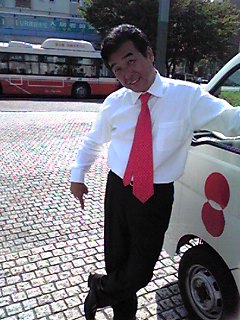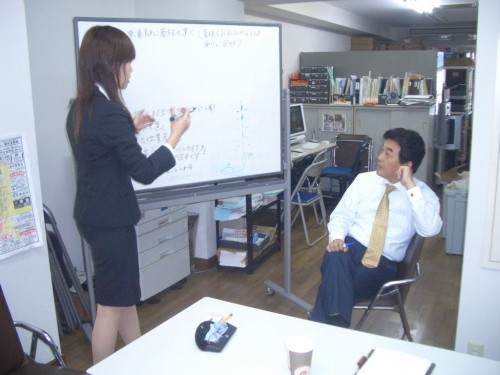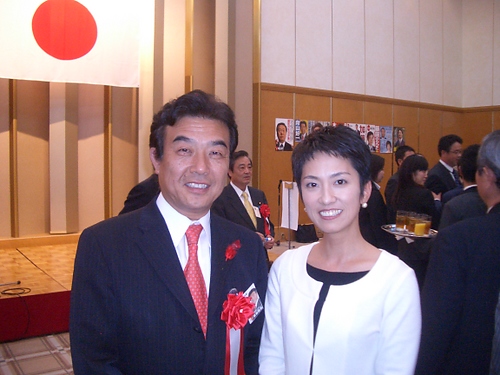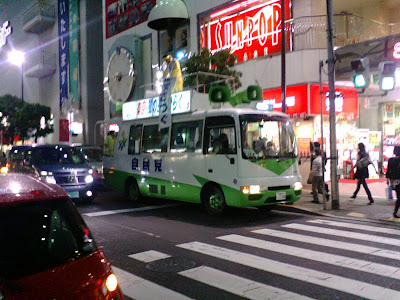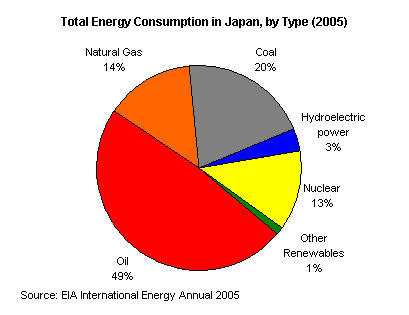Katsuhiro Suzuki (51) – This first-time candidate has DPJ backing and is running on his status as a born-and-raised Adachi-ku resident and his achievements as a businessman. He has spent most of his career in the job training industry and is currently active as a member of the local DPJ’s policy committee.
After starting at Recruit and then “a consultant company,” in 1996 he became involved in the establishment of Nagase PC School, an IT-related job training operation that, in his words, specialized in turning part-timers and “NEETs” (people Not in Employment, Education, or Training) into full-time employees. After that experience he moved on to other job training businesses before entering politics. Former colleagues from Recruit and his job training businesses are advisors and managers of his political campaigns.
Policy: His policies nominally focus on furthering the mission of his private-sector experience (getting underutilized young people into the workforce) in the political field. But other than that external flavoring, he seems to propose throwing money at Tokyo’s problems just like everyone else.
Generally, he is very proud of his achievements in the private sector and believes those lessons apply to government. Though not part of his official campaign literature, his Livedoor blog features commentary on issues of the day and provides clues to his way of thinking.
One of his most passionate blog posts comes from March 2009, in which he outlines why former executives like him belong in politics. He thinks politicians need “private sector skills” (民間力) defined as: creativity 創造力, the ability to be a producer プロデュース力 (meaning to put together and follow through on projects), the ability to know what’s happening on the ground 現場力, competitive strength 競争力, the ability to manage people マネジメント力, the ability to manage a business 経営力, and the ability to evaluate results 評価力.
Chances of winning: As a new and untested candidate he might have a tough time against several incumbents. From 2001 to 2005, the DPJ has picked up a seat from the LDP, moving the party standings in Adachi-ku from
- LDP – 3
- Komeito – 2
- Communist – 1
- DPJ – 0
To:
- LDP – 2
- Komeito – 2
- Communist – 1
- DPJ – 1
With the polls behind the DPJ, Suzuki might have a chance to edge out another LDP candidate (I expect the Communists and Komeito have the votes to keep their people in power). However, the election in Adachi-ku is more competitive than usual, contrary to the prefecture-wide trend. There were 7 candidates in 2001, 8 in 2005, and this year there are 10. On top of that all the incumbents except are running again, save for the Communists. If the vote splits among new candidates Suzuki might be in trouble.
A touch of humanity: He once headed his local PTA and claims to have had a dual-income household with his wife for the past 20 years, but that is all he is apparently willing to tell us about his personal life.
I went through this guy’s entire blog to try and find something truly interesting, and the closest I could come up with was that rant about how awesome corporate executives are. But I have a theory for why this is so: he spends all day every day speechifying in front of Ayase station. As his blog will back up, he seems to always be either in Kitasenju or Ayase station speaking into a microphone about how badly he wants to represent Adachi-ku. For months now I have seen him outside Ayase Station.
One reason I have trouble supporting this guy is he apparently forces his interns to wear uncomfortable-looking business suits:
And for good measure here’s one of Suzuki and Ren Ho (taken at a Rengo-affiliated local union meeting):

